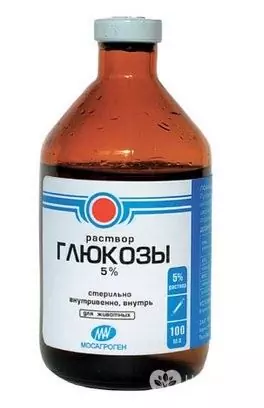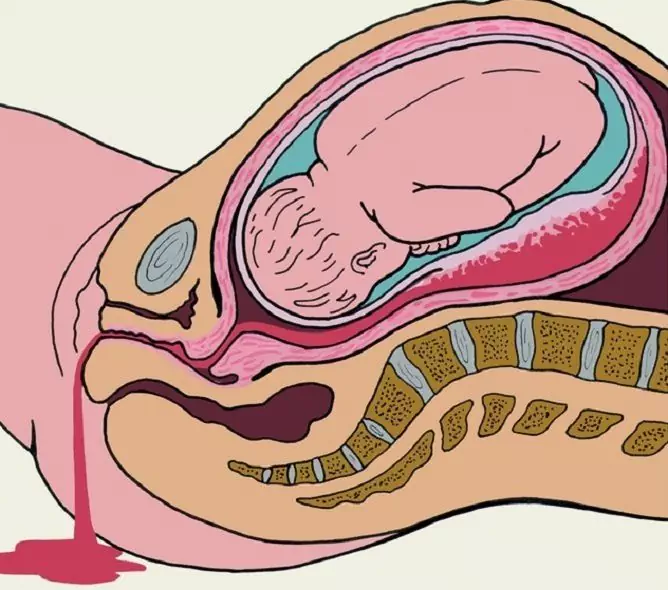- Author Rachel Wainwright [email protected].
- Public 2023-12-15 07:39.
- Last modified 2025-11-02 20:14.
Pseudotuberculosis
General information about the disease

Pseudotuberculosis is an acute infectious disease caused by intestinal bacteria and is characterized by severe intoxication, lesions of the skin and gastrointestinal tract. The causative agent of pseudotuberculosis is found in soil, water, and the body of many animal species. Rodents are the main vectors.
Pseudotuberculosis bacteria survive for a long time in the external environment and in food, retaining the ability to multiply for 2-3 months. When cooked, they die quickly, so one of the most effective preventive measures is proper food preparation. The greatest attention should be paid to winter storage products (potatoes, cabbage, carrots), as they are often infested by rodents. In addition, caution must be observed when consuming milk, sour cream, cottage cheese and other dairy products that are eaten without prior heat treatment. Quite often, pseudotuberculosis is found in water from open reservoirs.
The infection affects people of any age, but the greatest number of cases of infection with pseudotuberculosis is observed in children in the first years of life.
Pathogenesis
The causative agents of pseudotuberculosis enter the body with water or food. In the stomach, microbes are fixed, begin to multiply and penetrate into the regional lymph nodes, causing their inflammation. It is extremely difficult to detect pseudotuberculosis in children, the symptoms of which in the early stages practically do not manifest themselves. Basically, the infection is diagnosed after it enters various systems and organs, when there is a massive death of pathogens, accompanied by the release of toxins. Only after this, the characteristic signs of the disease appear in patients with pseudotuberculosis: organ damage, fever, intoxication.
Pathological studies of deceased patients revealed that, one way or another, pseudotuberculosis affects all vital systems of the body. In the organs of people with pseudotuberculosis, nonspecific changes of a dystrophic nature, microabscesses, granulomas were found. For this reason, it is necessary to treat pseudoturbekulosis in children immediately after diagnosis, which reduces the risk of developing severe complications. Note also that the transferred infection forms a very weak immunity. Sometimes it does not appear at all, so relapses and repeated cases of pseudotuberculosis are quite possible.
Pseudotuberculosis symptoms
The disease begins acutely and manifests itself:
- chills;
- fever;
- an increase in body temperature to 38-39 degrees;
- symptoms of general intoxication of the body;
- headache;
- severe pain in joints and muscles;
- nausea, vomiting;
- cramping or persistent abdominal pain.
As a rule, the sources of pain are localized in the epigastric region, in the lower right abdomen and around the navel. Sometimes they spread to the right hypochondrium. If pseudotuberculosis appears in children, the symptoms indicate serious disorders of the digestive system. The stool becomes liquid or viscous, acquires a specific pungent odor. When pseudotuberculosis gets to the large intestine, mucus or blood impurities appear in the stool. Stool frequency increases up to 15 times a day.
The characteristic symptoms of pseudotuberculosis - the so-called "hood" - redness of the face and neck. Discoloration of the skin is also observed on the hands and feet. Usually redness becomes noticeable on the 3-5th day of illness. It lasts for a week and then disappears, leaving behind scaly patches of skin.
Very often, pseudotuberculosis leads to the appearance of a white coating on the tongue. It disappears 5-7 days after the onset of the disease, after which the tongue acquires a rich crimson color.
For the diagnosis of pseudotuberculosis, both anamnesis data and specific methods - serological and bacteriological - are used. Since the symptoms of the disease are similar to many other infections when diagnosed with pseudotuberculosis, patients are taken: samples of feces, blood, samples of cerebrospinal fluid and lymph nodes. To identify tuberculosis antigens, specialists use an enzyme immunoassay.
Treatment of pseudotuberculosis

Pseudotuberculosis is treated with antibiotics, chemotherapy, and sulfonamides. With pronounced symptoms of intoxication, patients are shown an intravenous infusion of 5% glucose solution or hemodesis. Note that pseudotuberculosis in children requires the most responsible approach to the choice of drugs, especially antibiotics. Self-medication is unacceptable. The child should be immediately shown to a doctor who will make an accurate diagnosis and select the most gentle drugs.
The duration of the course of treatment for pseudotuberculosis depends on the form of the disease. If an advanced pseudotuberculosis is diagnosed, the treatment will be longer, since it will be necessary to identify secondary infections and restore the work of the main body systems. If indicated, doctors can resort to surgical treatment. Discharge of patients is possible only after complete recovery and negative tests for the presence of tuberculosis antigens.
Prevention of pseudotuberculosis
There is no effective vaccine against pseudotuberculosis, therefore preventive measures are reduced to fighting rodents, monitoring the state of vegetable stores, observing hygiene rules in enterprises that process, store and transport food.
YouTube video related to the article:
The information is generalized and provided for informational purposes only. At the first sign of illness, see your doctor. Self-medication is hazardous to health!






